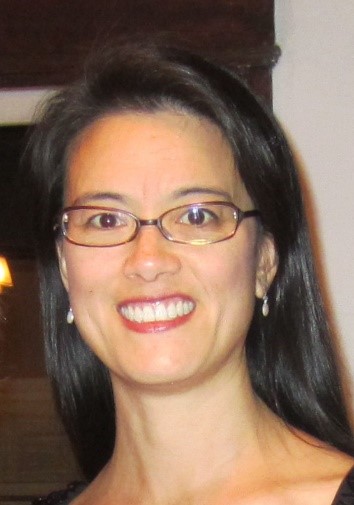Help Shelter Children from the Health Risks of Housing Insecurity

Christine Ma, MD, FAAP
May 21, 2018
Imagine a single mother whose 3-year-old child has autism. Consider the time required to access developmental services vital to helping her daughter thrive. Add in the fact that there's no space in a fully subsidized child care program that can give her daughter the supports she needs. This means the mother has to pay for childcare to keep her near minimum-wage job. The cost of childcare in northern California is high, so mom can't pay this month's rent.
Housing insecurity isn't new for this family. After fleeing domestic violence, they stayed in a shelter while mom worked hard to get herself back on her feet--physically, emotionally, and financially. Afterwards, they moved from one city to the next, trying to find a decent job and an affordable place to live. Unfortunately, they couldn't find the services they needed, so they came back to Oakland--and they're about to experience homelessness again.
This family represents just one of the hundreds I see each year in our homeless outreach clinic, which is part of a larger primary care clinic serving thousands of patients each year from 3 surrounding counties. Most of the families we serve are working-poor and experience ongoing challenges to finding, and keeping, safe and affordable housing. Here in Oakland, and throughout the United States, occasional and chronic homelessness remains a persistent reality for children.
As I have seen first-hand, housing insecurity and homelessness are associated with a variety of children's health issues, including chronic disease, malnutrition, developmental delays, and poor mental health outcomes. Substandard housing also can expose children to safety risks such as lead, mold, fires, and other injuries.
Fortunately, our homeless outreach clinic has a team of case managers and mental health providers to identify and support the needs of each family. This isn't the reality for all providers.
In our pediatric residency program, we teach the importance of understanding a family's living situation in guiding the treatment plan. When I see a 1-year-old with asthma and no stable place to stay each night, for example, giving the family a large nebulizer machine that must be carried and plugged in is not a good option.
For many years, pediatric residents and other health care providers have asked me how best to ask about a family's housing situation. So, we train residents to ask about the child's environment, because if we do not ask, the family is not likely to offer this critical information. However, unlike other issues which have validated screening tools–developmental delays, depression, food insecurity–the issue of housing status does not.
“In our pediatric residency program, we teach the importance of understanding a family’s living situation in guiding the treatment plan. When I see a 1-year-old with asthma and no stable place to stay each night, for example, giving the family a large nebulizer machine that must be carried and plugged in is not a good option.”
That's why I was excited to read a recent Pediatrics article by Megan Sandel, MD, MPH, and colleagues, "Unstable Housing and Caregiver and Child Health in Renter Families." This study is the first to offer and test questions to screen for different unstable housing situations. The authors interviewed caregivers of children from birth to age 4 year, asking about:
- Being behind on rent: "During the last 12 months, was there a time when you were not able to pay the mortgage or rent on time?"
- Experiencing multiple moves: "In the past 12 months, how many places has the child lived?"
- Current housing: "What type of housing does the child live in?"
- Lifetime history of homelessness: "Since the child was born, has the child ever been homeless or lived in a shelter?"
The researchers found that all these forms of housing instability were associated with adverse caregiver and child health outcomes in low-income renter households. Although this is a single cross-sectional study, the findings provide promising direction to the field and offer a tested screening strategy for providers to adopt in clinical practice.
Because housing status has such a profound impact on the health of children and families, providers should ask about it at each visit--just as we do for developmental delays at checkups. Identifying a family that is homeless is just the first step, but an important one. By incorporating screenings into our practice, partnering with community resources, helping to raise awareness of families facing housing instability and advocating for them, pediatricians can have a significant impact on the lives–and health–of these patients.
We can extend our profession's impact on this growing crisis through groups such as the American Academy of Pediatrics Council on Community Pediatrics and others, such as the National Network to End Family Homelessness' Health Committee. The Network's Health Committee works with providers who successfully serve housing insecure populations to develop tools and resources others can use to better identify and connect families with needed resources.
More than simply shelter, adequate housing supports a safe, stable, and healthy environment for children to live and play, develop and grow. Being able to help patients like my 3-year-old patient, struggling with autism and on the brink of homelessness for the second time in her short life, is the very reason I became a pediatrician.
*The views expressed in this article are those of the author, and not necessarily those of the American Academy of Pediatrics.
About the Author
Christine Ma, MD, FAAP
Christine Ma, MD, FAAP is a member of the American Academy of Pediatrics (AAP) Council on Community Pediatrics and the AAP Technical Assistance Project Advisory Committee. She is the medical director of the Encore Medical Clinic, a homeless outreach clinic based at UCSF Benioff Children’s Hospital Oakland. She is also the medical director of Kerry’s Kids (www.KerrysKids.org), a non-profit pediatric mobile health clinic providing free health care services to children who are homeless, uninsured and underserved.